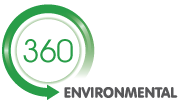Used EEE exports
Unless used EEE conforms with the EU Correspondence Guidelines, it must be exported as waste in line with Transfrontier Shipment requirements.
The key requirements for used EEE to be exported without it being regarded as waste are extracted below, but exporters are advised to read the document in full.
Para 2. Distinction between EEE and WEEE
EEE becomes WEEE if its holder discards it, or intends or is required to discard it. To make this judgement it may be necessary to examine all circumstances including the history of an item on a case by case basis. However, there are characteristics of used EEE that are likely to indicate whether it is waste or not.
1. Situations where used EEE should normally be considered WEEE.
Used EEE should, in accordance with the Basel Convention guidelines, normally be considered WEEE if:
(a) The EEE is destined for disposal or recycling, instead of root cause analysis or re-use, or its fate is uncertain;
(b) The EEE is not complete ? essential parts are missing and the EEE cannot perform its key functions;
(c) The EEE shows a defect that materially affects its functionality and fails relevant functionality tests;
(d) The EEE shows physical damage that impairs its functionality or safety, as defined in relevant standards, and cannot be repaired at a reasonable cost;
(e) The protection against damage during transport, loading and unloading operations is inappropriate, e.g. the packaging or stacking of the load is insufficient;
(f) The EEE is particularly worn or damaged or damaged in appearance and its appearance reduces its marketability;
(g) The EEE has among its constituent part(s) hazardous components that are required to be disposed of under European or national legislation or are prohibited to be exported or prohibited for use in such equipment EEE under European Union or national legislation;
(h) There is no regular market for the EEE;
(i) The EEE is destined for disassembly and cannibalization (to gain spare parts) or
(j) The price paid for the items is significantly lower than would be expected from fully functional EEE for re-use.
2. General considerations
Where the holder of the object claims that he intends to ship or is shipping used EEE suspected to be WEEE and not WEEE, the holder must have available the following to substantiate this claim:
(a) A copy of the invoice and contract relating to the sale and/or transfer of ownership of the EEE which states that the EEE is destined for direct re-use and that it is fully functional;
(b) Evidence of evaluation or testing in the form of a copy of the records (certificate of testing, proof of functionality) on every item within the consignment and a protocol containing all record information.
(c) A declaration made by the holder who arranges the transport of the EEE that none of the material or equipment within the consignment is waste as defined by Article 3(1) of the Waste Framework Directive; in addition and in accordance with the Basel Convention guidelines, a declaration should be provided that none of the material or equipment within the consignment is defined as or considered to be waste in any country involved in the transport (countries of dispatch and destination and, if applicable, countries of transit);
and
(d) Appropriate protection against damage during transportation, loading and unloading in particular through sufficient packaging and appropriate stacking of the load; in addition and in accordance with the Basel Convention guidelines, each piece of EEE should be individually protected.
Producer Responsibility
- Overview
- WEEE Regulations
-
- Data
- Used EEE exports
- Packaging Waste Regulations
-
- Packaging Obligation Calculator
-
- PRN Prices
-
- Data
-
- Agency Communications
- Extended Producer Responsibility (EPR)
- Essential Requirements
- Batteries Regulations
- End of Life Vehicle Regulations
- Agency Comms
- Plastic Packaging Tax
- Deposit Return Scheme (DRS)
